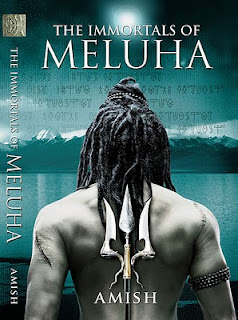‘Clean Mumbai! Green Mumbai!
Beautiful Mumbai’ – These few phrases are a rude bundle of crap from BMC and
all the politicians who have made the Shanghaification of Mumbai a colossal
joke.
Apart from the many popular
polluting elements of air, water, sound that afflict Mumbai, one which is less
talked about but one of the most rampant forms is ‘Visual Pollution’.
Huge ugly looking vinyl hoardings
with ugly politicians with creepy smiles grouped with sycophants dot every road
and square. Those very smiling goons
bash up sincere lads who go to remove the illegal cost-free advertising
hoardings and threaten BMC workers who order them removed. Bah! to think, multinationals shell out money
to pay for the almost as ugly OOH (out of home) advertising.
The airport road was once upon a
time supposed to be ‘beautified’ to avoid foreign visitors from getting
headaches from all the ugliness that hits them suddenly. After seeing a sea of blue, which is not the
Arabian sea, visitors and Mumbaiites come out in the open in grubby taxis, to
see people peeing, squatting, shitting on roads, picking lice on their heads
etc. If that were not enough to make them want to turn back, they get to see
the unavoidable unseemly sight of people spitting usually that revolting red
muck every five seconds on pockmarked roads.
The ugliness continues on the
unpainted roads with construction rubble lying everywhere –on the sides, below
flyovers, on the unpainted dividers, with dried up and dead ‘beautifying
trees’. No lane markings are present on any roads, and the dividers broken
wherever convenient for motorists to make illegal passes and turns. New
flyovers had come up were supposed to be gleaming and shiny new structures. Then I saw these weird metal contrapments,
probably cellphone towers all along the flyovers. God! More ugliness! Talking of unpainted,
rows and rows of dilapidated buildings with peeling dirty paint look on with
shanties at their bases all along every large road in Mumbai and in smaller
bylanes.
‘Clean up!’ dirty green Garbage
trucks of BMC freely ride the roads at all times of the day and one sees a
‘Mera Bharat Mahaan’ painted on some unsightly broken granite obstruction in
the middle of the road. The whole city is a dustbin for one and all where
people litter as they please, where they stand, leaving their legacy behind for
someone to clean up after them. Shopkeepers dust their shops driving the
garbage to the middle of the road onto unsuspecting pedestrians. A pile of garbage that should not be where it
is, collects for days together. Numerous
flea ridden dogs and scraggly cats are seen loitering near these dumps or the
middle of roads.
One would escape the ugliness that
abounds this city once one was home; I would have liked to believe, but there,
as I enter, dirty shoes of all the family haphazardly kept by my building
people greet me on the staircase. Across the window, in the opposite building,
I am forced to look at my neighbours’ chaddis, banians and bras hanging out of
their living room windows to dry.
Call me intolerant or just a
foreign returned NRI even if it was for a really short while, or call me
snooty, a snob, or whatever, but could we PLEASE stop exhibiting all our
clothes to our neighbours, and stop littering alteast!?
And to think, people call this morbid
place a beautiful city. Mere wishful thinking probably where we refer to the
‘indomitable’spirit and resilience of Mumbaiites as beauty. I wish we stopped
talking about beauty like that in the Miss Worlds where they unnecessarily
discuss ‘inner beauty’ on mugged up answers. I am done with the inner beauty, I
want to see some physical beauty in this city! It is nice to sit on to Marine
drive and stare out into the sea out of Mumbai.
Staring out of Mumbai makes it beautiful you see. The city is a damn dump. Can anyone at all do anything to reduce
disgusting habits, really clean up and to make this city less of an eyesore
than it can be helped? I love this city despite its short-comings and heaven
knows why I want to return always to it and I always did, but indeed, it is
being abused way beyond its tolerance limits. One day, it will exact its
terrible revenge from the denizens of Mumbai unless something were done about
it.





